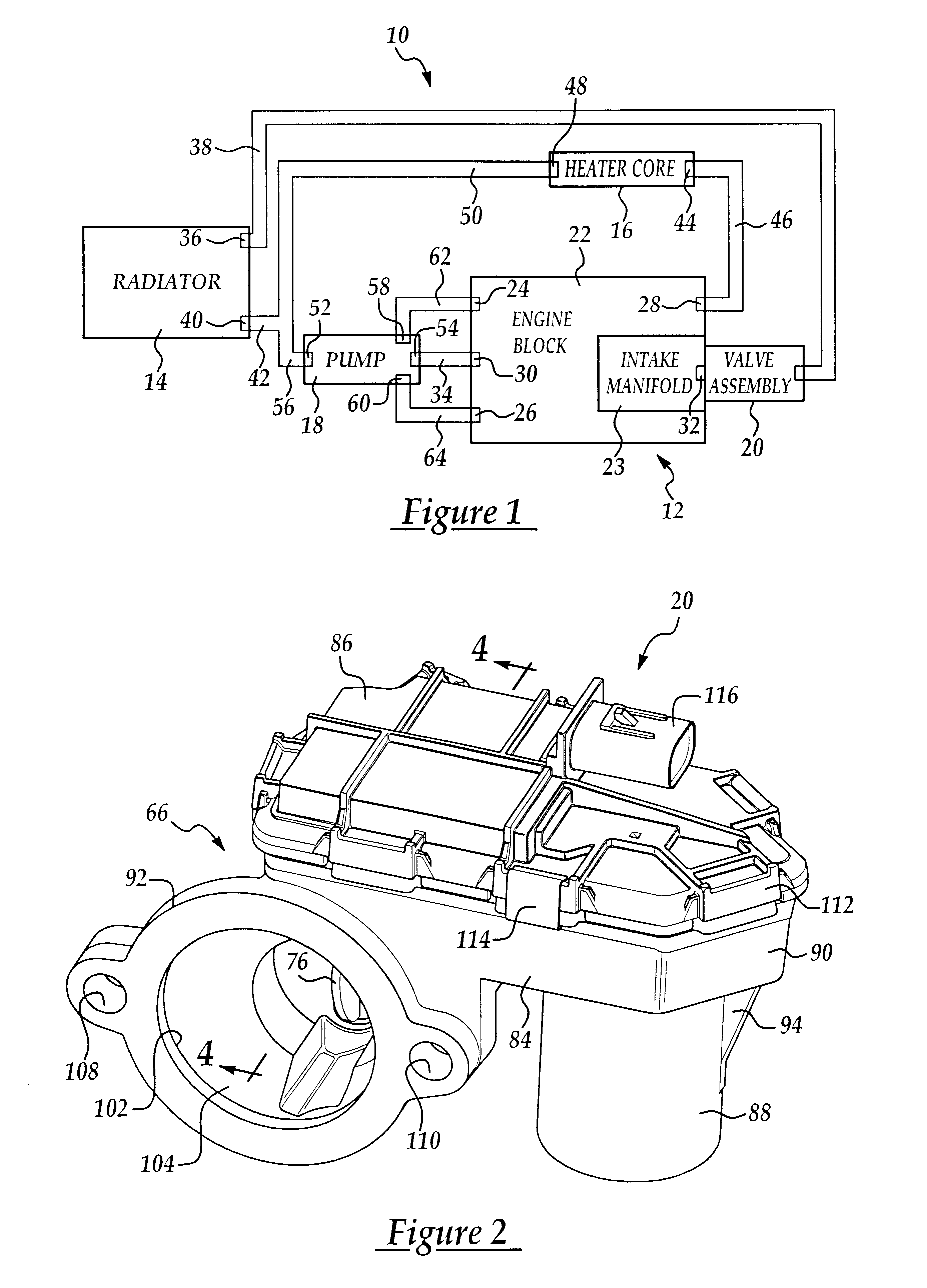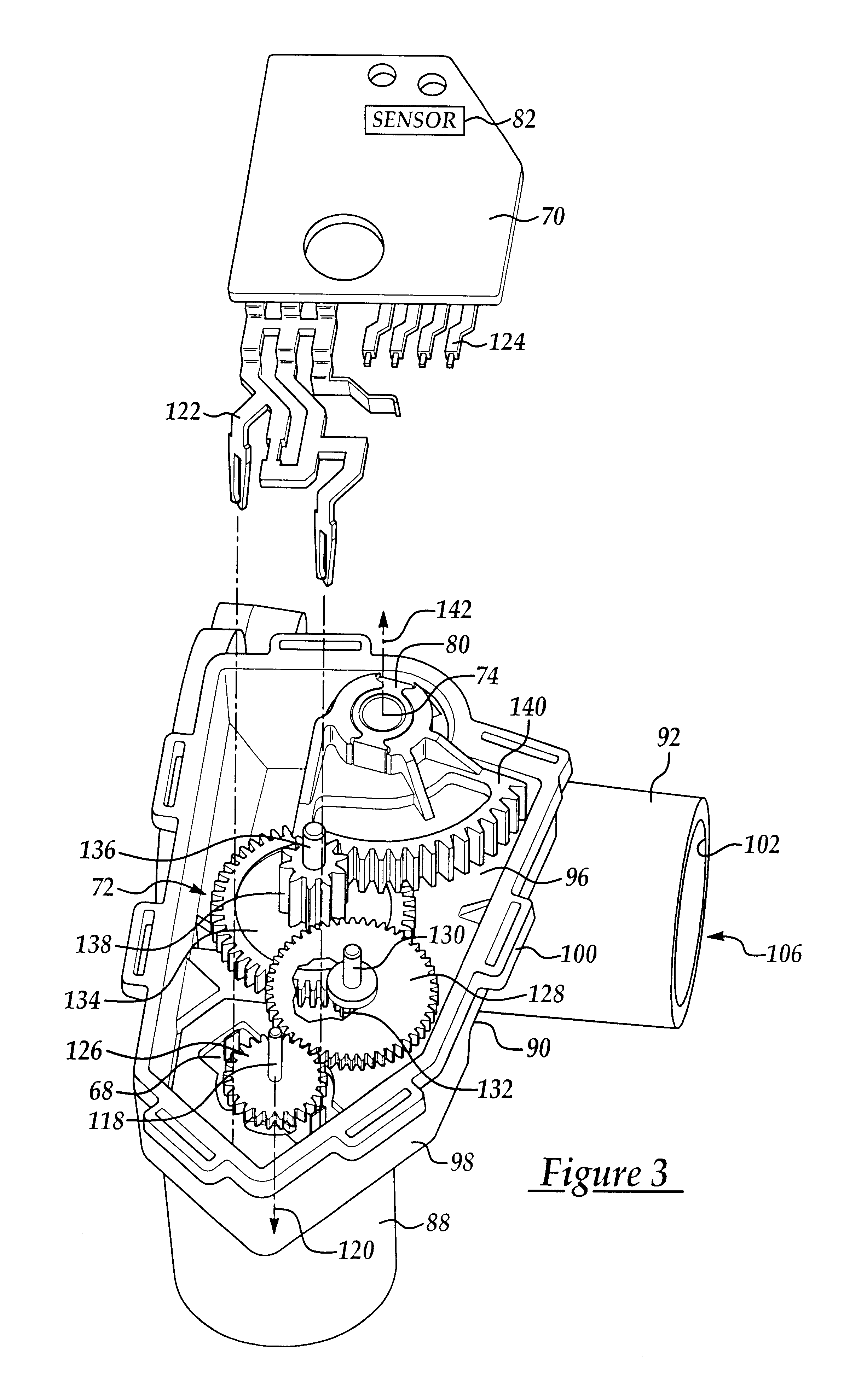Valve assembly for controlling coolant flow exiting an engine
a valve assembly and coolant technology, applied in the direction of valves, mechanical equipment, machines/engines, etc., can solve the problems of reducing engine efficiency under certain operating conditions, affecting the physical geometry of conventional thermostats, and disadvantages of using thermostats in conventional fluid handling systems
- Summary
- Abstract
- Description
- Claims
- Application Information
AI Technical Summary
Benefits of technology
Problems solved by technology
Method used
Image
Examples
Embodiment Construction
Referring now to the drawings wherein like reference numerals are used to identify identical components in the various views, FIG. 1 illustrates a fluid handling system 10 for a vehicle having an engine 12, a radiator 14, a heater core 16, a pump 18, and a valve assembly 20 in accordance with the present invention. Although the inventive valve assembly 20 will be described with respect to a vehicle fluid handling system 10, it should be understood that the inventive valve assembly may find use in a wide variety of applications in which engines are used to provide power and are cooled by fluids flowing through the engine.
Engine 12 provides motive power to the vehicle and may comprise any of a wide variety of conventional engines. Engine 12 may include an engine block 22, a cylinder head (not shown), a crossover casting, and intake manifold 23 that together define a plurality of cylinders (not shown) and fluid passages (not shown) configured to allow an engine coolant to circulate wit...
PUM
 Login to View More
Login to View More Abstract
Description
Claims
Application Information
 Login to View More
Login to View More - R&D
- Intellectual Property
- Life Sciences
- Materials
- Tech Scout
- Unparalleled Data Quality
- Higher Quality Content
- 60% Fewer Hallucinations
Browse by: Latest US Patents, China's latest patents, Technical Efficacy Thesaurus, Application Domain, Technology Topic, Popular Technical Reports.
© 2025 PatSnap. All rights reserved.Legal|Privacy policy|Modern Slavery Act Transparency Statement|Sitemap|About US| Contact US: help@patsnap.com



